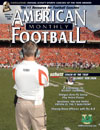AMERICAN FOOTBALL MONTHLY THE #1 RESOURCE FOR FOOTBALL COACHES
Article CategoriesAFM Magazine
|
Strength Report: University of S. Florida - Static Stretching & Dynamic Warm Upsby: Ron McKeeferyAsst. Athletic Director, Strength & Conditioning, University of South Florida © More from this issue At the University of South Florida we begin each workout with our Static Stretching and Dynamic Warm Up routines (See Charts). The goal of this article is to provide you with structure. Each of you have your own stretch routines and warm ups. They could be easily inserted into this part of the workout. However, I would like for you to consider the goals of static and dynamic stretching; the possibility of adding some sprint mechanics into it; and how strength training will benefit your flexibility. It is well researched that stretching reduces the risk of injury, helps reduce delayed muscle soreness, lengthens muscle fibers and increases circulation. For us it also provides a definitive start time and opportunity for the players to prepare mentally for the workout at hand. Players are considered tardy if they come in after we h....The full article can only be seen by subscribers. Subscribe today!
|
|
|||||||
| HOME |
MAGAZINE |
SUBSCRIBE | ONLINE COLUMNISTS | COACHING VIDEOS |
Copyright 2025, AmericanFootballMonthly.com
All Rights Reserved





